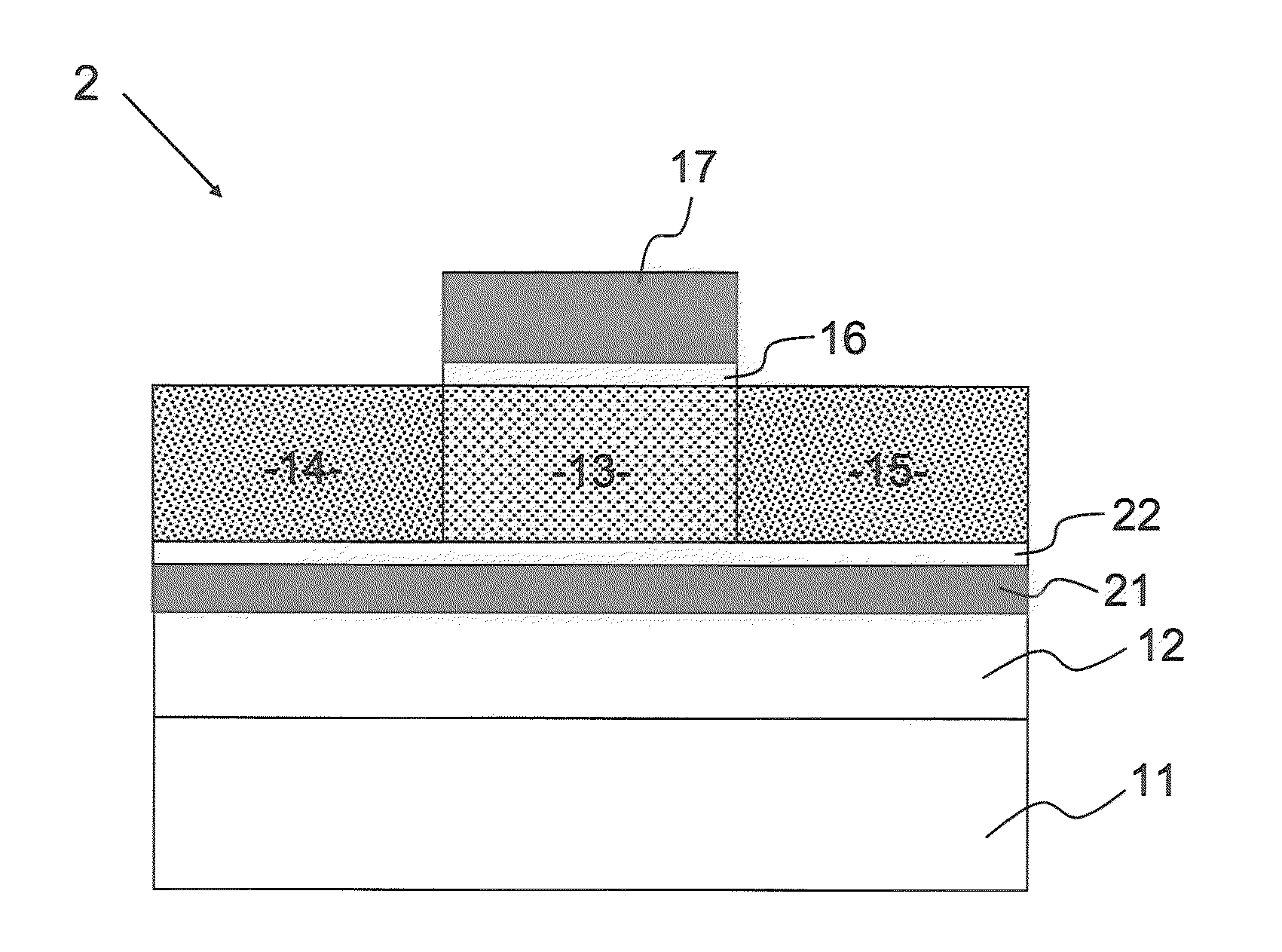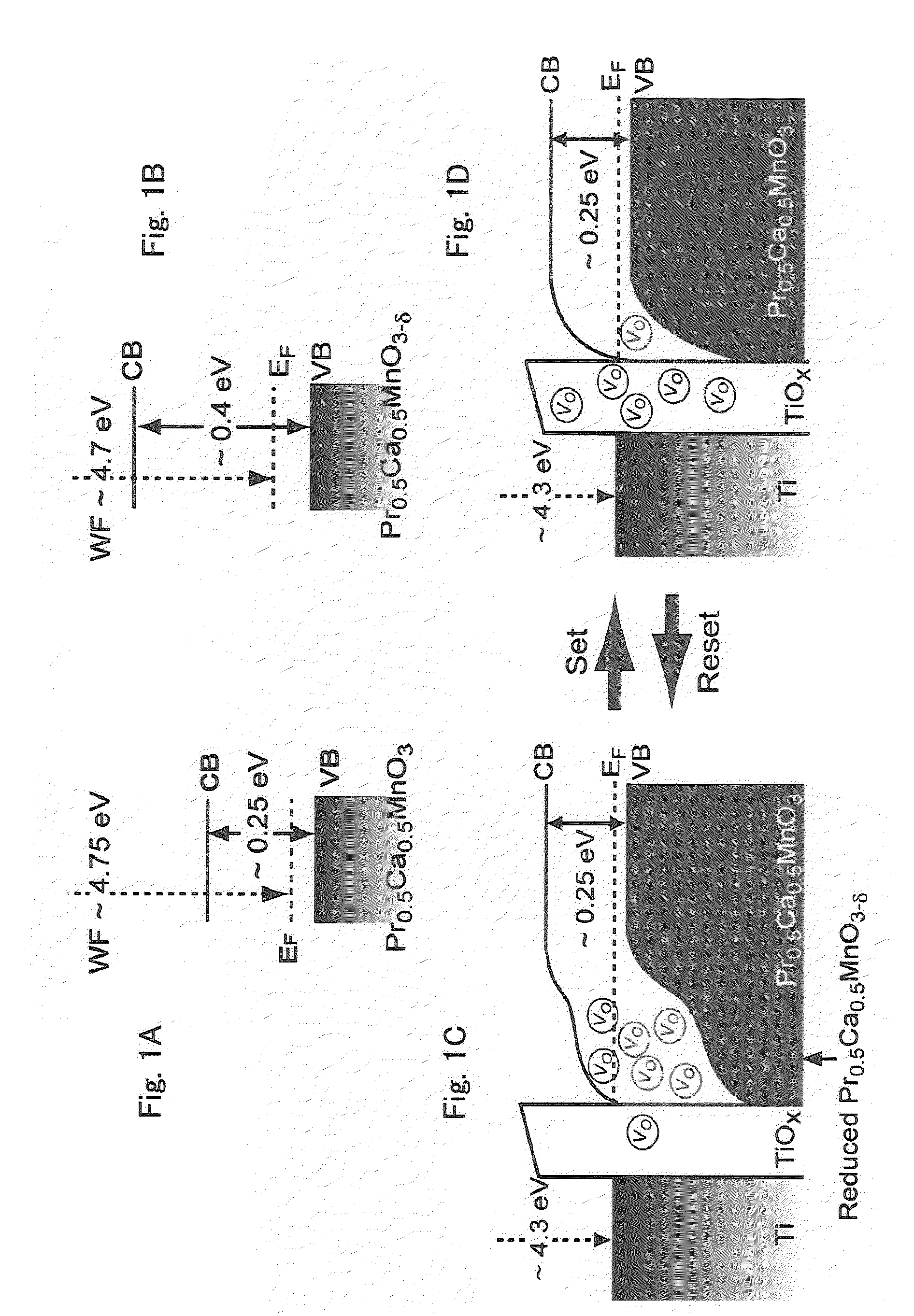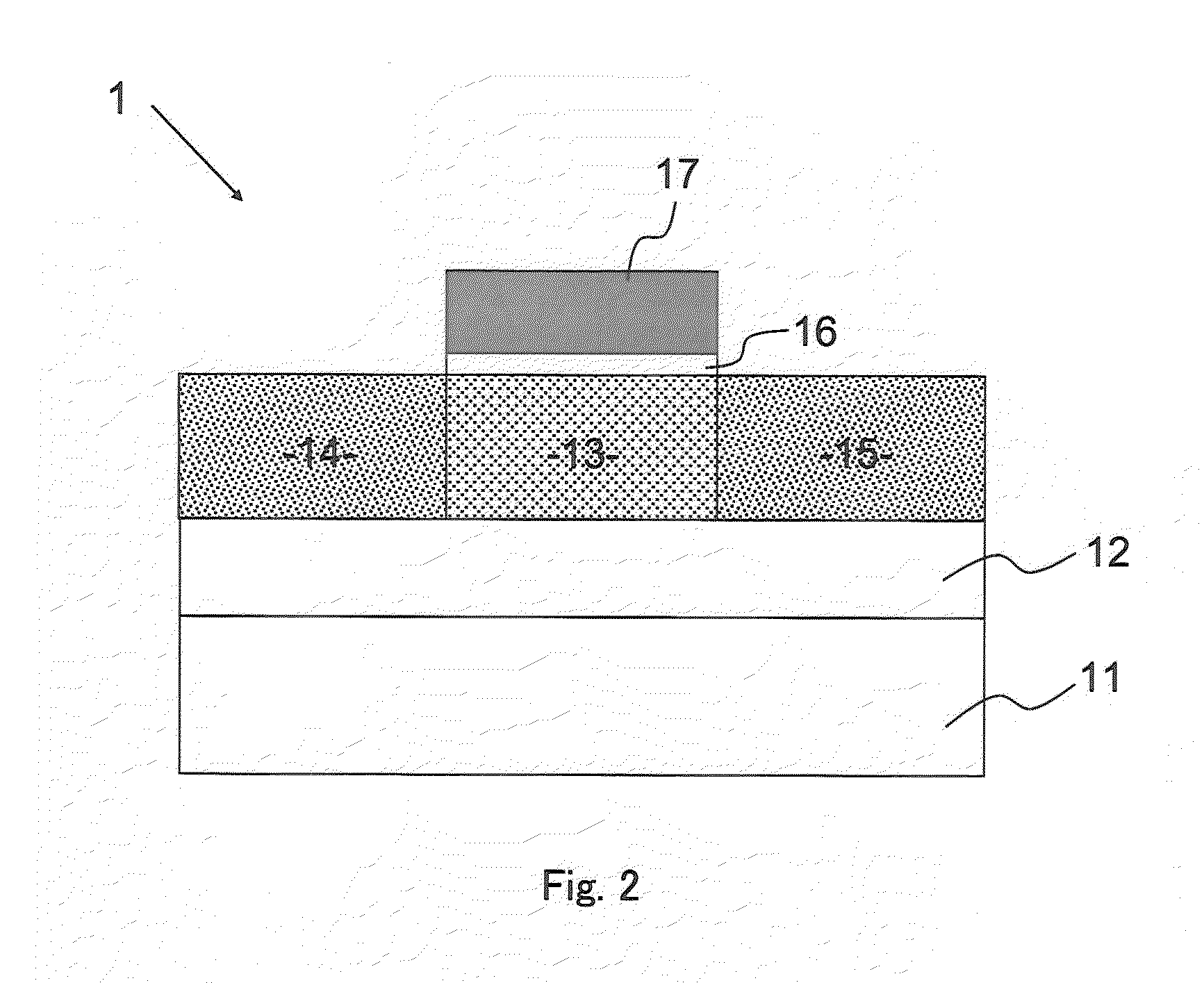Nonvolatile variable resistive element and nonvolatile semiconductor memory device
- Summary
- Abstract
- Description
- Claims
- Application Information
AI Technical Summary
Benefits of technology
Problems solved by technology
Method used
Image
Examples
first embodiment
[0076]FIG. 2 is a cross-sectional view of an element structure of a nonvolatile variable resistive element according to a first embodiment of the present invention (hereinafter, referred to as the element 1 of the present invention). In addition, a substantial part is overdrawn in the following drawings for convenience of description, so that a dimensional ratio of each part of the element does not always coincide with an actual dimensional ratio.
[0077]As shown in FIG. 2, the element 1 of the present invention has metal oxide films 13, 14, and 15 formed on an interlayer insulation film 12 on a substrate 11, an insulation film 16 formed in a predetermined region on the metal oxide films 13 to 15, and a gate electrode (third electrode) 17 formed on the insulation film 16. The metal oxide film 13 is composed of a metal oxide which causes a resistance change depending on an oxide concentration in the film. When a voltage not lower than a threshold value is applied from the gate electrod...
second embodiment
[0096]FIG. 6 is a cross-sectional view of an element structure of a nonvolatile variable resistive element according to a second embodiment of the present invention (hereinafter, referred to as the element 2 of the present invention). The element 2 of the present invention further includes an electrode to supply a writing voltage from the side of a substrate, in addition to the components of the element 1 of the present invention, that is, the nonvolatile variable resistive element has a four-terminal structure.
[0097]As shown in FIG. 6, the element 2 of the present invention is provided such that a second gate electrode (fourth electrode) 21 is formed on the interlayer insulation film 12 on the substrate 11, and the metal oxide films 13, 14, and 15 are formed on the second gate electrode 21 with a second insulation film 22 interposed therebetween. The insulation film 16 is formed in a predetermined region on the metal oxide films 13 to 15, and the gate electrode (third electrode) 17...
third embodiment
[0111]FIG. 10 is a cross-sectional view of an element structure of a nonvolatile variable resistive element according to a third embodiment of the present invention (hereinafter, referred to as the element 3 of the present invention).
[0112]The element 3 of the present invention has a structure in which the annular metal oxide films 13, 14, and 15 are laminated in an axial direction, and the annular insulation film 16 is formed on outer side wall surfaces of the annular metal oxide films 13 to 15, and the annular second insulation film 22 is formed on inner side wall surfaces of the annular metal oxide films 13 to 15. That is, the element 3 of the present invention is formed in a cylindrical shape having a three-layer structure in which the second insulation film 22, the metal oxide films 13 to 15, and the insulation film 16 are formed from the inner side in this order, and the plate-shaped gate electrode (third electrode) 17 is formed into a layer shape perpendicular to an axial dir...
PUM
 Login to View More
Login to View More Abstract
Description
Claims
Application Information
 Login to View More
Login to View More - R&D
- Intellectual Property
- Life Sciences
- Materials
- Tech Scout
- Unparalleled Data Quality
- Higher Quality Content
- 60% Fewer Hallucinations
Browse by: Latest US Patents, China's latest patents, Technical Efficacy Thesaurus, Application Domain, Technology Topic, Popular Technical Reports.
© 2025 PatSnap. All rights reserved.Legal|Privacy policy|Modern Slavery Act Transparency Statement|Sitemap|About US| Contact US: help@patsnap.com



